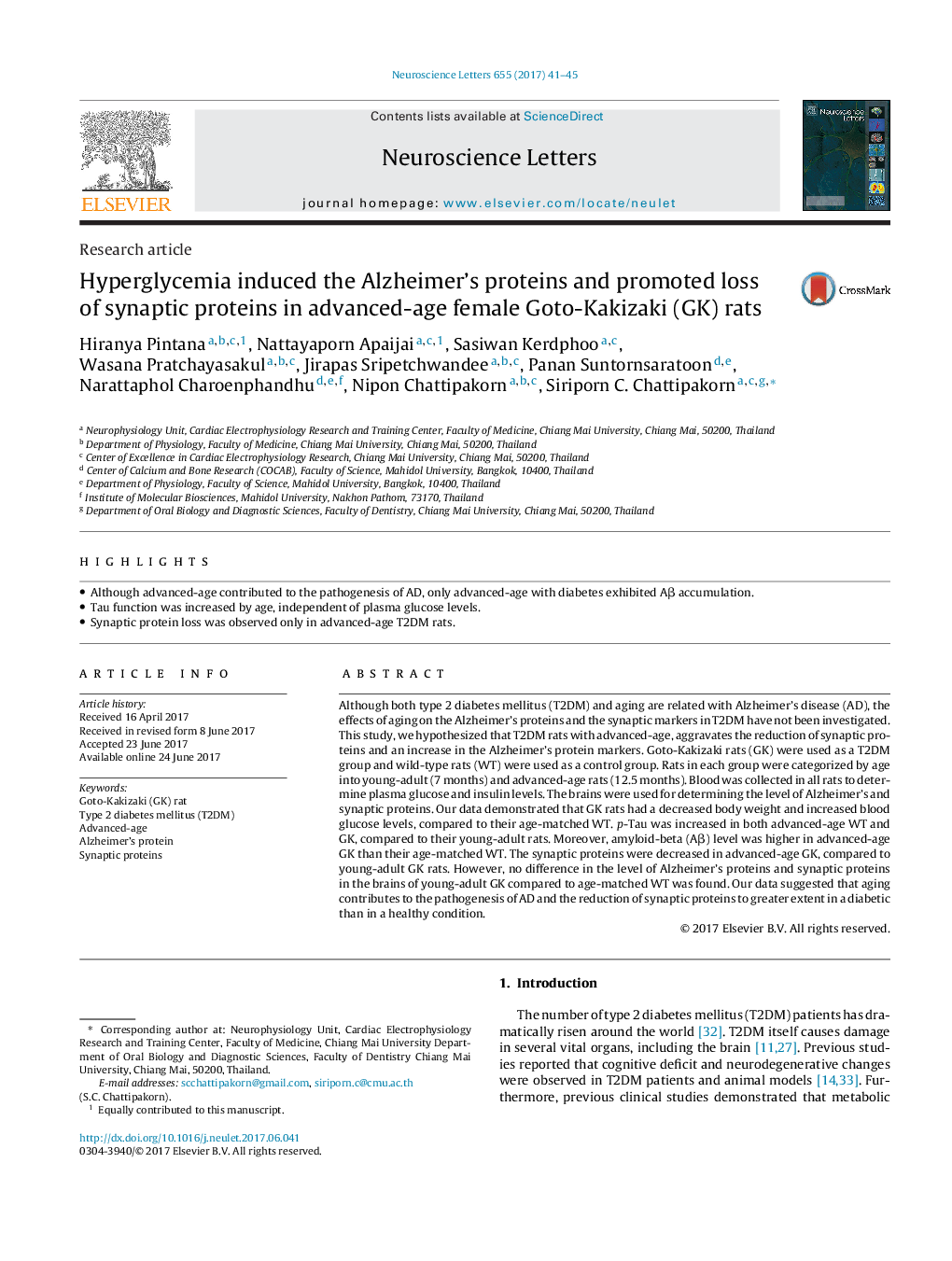| Article ID | Journal | Published Year | Pages | File Type |
|---|---|---|---|---|
| 5738307 | Neuroscience Letters | 2017 | 5 Pages |
â¢Although advanced-age contributed to the pathogenesis of AD, only advanced-age with diabetes exhibited Aβ accumulation.â¢Tau function was increased by age, independent of plasma glucose levels.â¢Synaptic protein loss was observed only in advanced-age T2DM rats.
Although both type 2 diabetes mellitus (T2DM) and aging are related with Alzheimer's disease (AD), the effects of aging on the Alzheimer's proteins and the synaptic markers in T2DM have not been investigated. This study, we hypothesized that T2DM rats with advanced-age, aggravates the reduction of synaptic proteins and an increase in the Alzheimer's protein markers. Goto-Kakizaki rats (GK) were used as a T2DM group and wild-type rats (WT) were used as a control group. Rats in each group were categorized by age into young-adult (7 months) and advanced-age rats (12.5 months). Blood was collected in all rats to determine plasma glucose and insulin levels. The brains were used for determining the level of Alzheimer's and synaptic proteins. Our data demonstrated that GK rats had a decreased body weight and increased blood glucose levels, compared to their age-matched WT. p-Tau was increased in both advanced-age WT and GK, compared to their young-adult rats. Moreover, amyloid-beta (Aβ) level was higher in advanced-age GK than their age-matched WT. The synaptic proteins were decreased in advanced-age GK, compared to young-adult GK rats. However, no difference in the level of Alzheimer's proteins and synaptic proteins in the brains of young-adult GK compared to age-matched WT was found. Our data suggested that aging contributes to the pathogenesis of AD and the reduction of synaptic proteins to greater extent in a diabetic than in a healthy condition.
